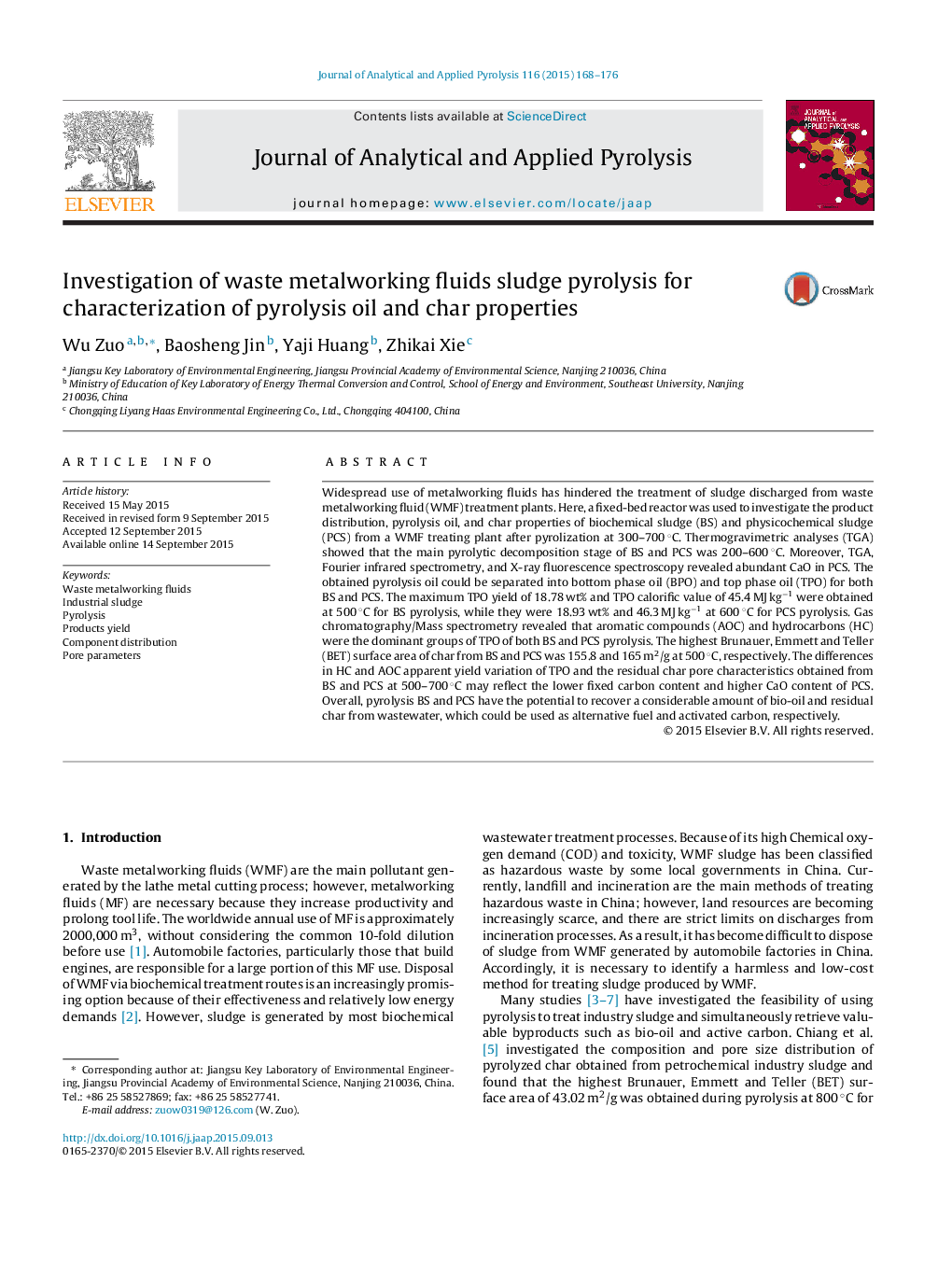| کد مقاله | کد نشریه | سال انتشار | مقاله انگلیسی | نسخه تمام متن |
|---|---|---|---|---|
| 1197014 | 1492961 | 2015 | 9 صفحه PDF | دانلود رایگان |
• A fixed-bed reactor was used to investigate the product distribution, pyrolysis oil, and char properties of biochemical sludge and physicochemical sludge from a waste metalworking fluid treating plant after pyrolization at 300–700 °C.
• The maximum top phase oil yield of 18.78 wt% and top phase oil calorific value of 45.4 MJ kg−1 were obtained at 500 °C for biochemical sludge pyrolysis, while they were 18.93 wt% and 46.3 MJ kg−1 at 600 °C for physicochemical sludge pyrolysis.
• The BET surface area of char from biochemical sludge and physicochemical sludge was 155.8 and 165 m2/g at 500 °C, respectively.
• The differences in hydrocarbons and aromatic compounds apparent yield variation of top phase oil and the residual char pore characteristics obtained from biochemical sludge and physicochemical sludge at 500–700 °C may reflect the lower fixed carbon content and higher CaO content of physicochemical sludge.
Widespread use of metalworking fluids has hindered the treatment of sludge discharged from waste metalworking fluid (WMF) treatment plants. Here, a fixed-bed reactor was used to investigate the product distribution, pyrolysis oil, and char properties of biochemical sludge (BS) and physicochemical sludge (PCS) from a WMF treating plant after pyrolization at 300–700 °C. Thermogravimetric analyses (TGA) showed that the main pyrolytic decomposition stage of BS and PCS was 200–600 °C. Moreover, TGA, Fourier infrared spectrometry, and X-ray fluorescence spectroscopy revealed abundant CaO in PCS. The obtained pyrolysis oil could be separated into bottom phase oil (BPO) and top phase oil (TPO) for both BS and PCS. The maximum TPO yield of 18.78 wt% and TPO calorific value of 45.4 MJ kg−1 were obtained at 500 °C for BS pyrolysis, while they were 18.93 wt% and 46.3 MJ kg−1 at 600 °C for PCS pyrolysis. Gas chromatography/Mass spectrometry revealed that aromatic compounds (AOC) and hydrocarbons (HC) were the dominant groups of TPO of both BS and PCS pyrolysis. The highest Brunauer, Emmett and Teller (BET) surface area of char from BS and PCS was 155.8 and 165 m2/g at 500 °C, respectively. The differences in HC and AOC apparent yield variation of TPO and the residual char pore characteristics obtained from BS and PCS at 500–700 °C may reflect the lower fixed carbon content and higher CaO content of PCS. Overall, pyrolysis BS and PCS have the potential to recover a considerable amount of bio-oil and residual char from wastewater, which could be used as alternative fuel and activated carbon, respectively.
Journal: Journal of Analytical and Applied Pyrolysis - Volume 116, November 2015, Pages 168–176
